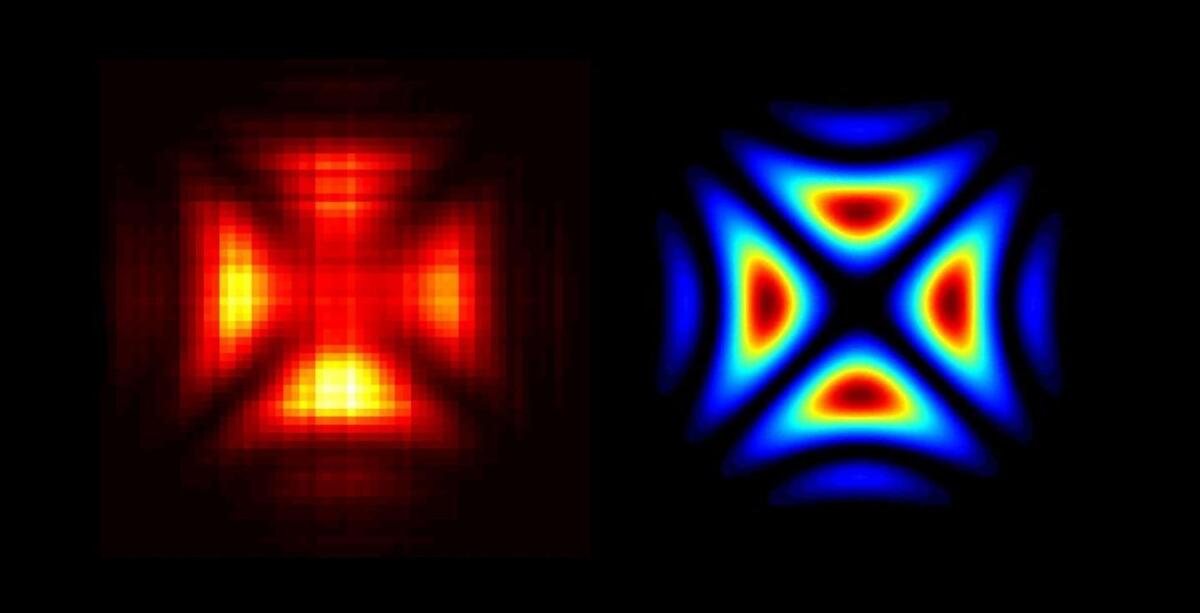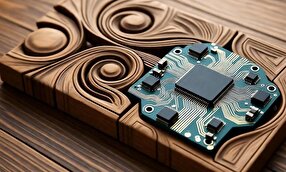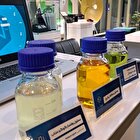Quantum Holograms Transform Light Into Unbreakable Security

Researchers have discovered a way to create quantum holograms, where entangled photons encode intricate information with unprecedented precision, the journal Advanced Photonics reported.
By leveraging the properties of metasurfaces, they demonstrated control over entangled holographic letters, opening doors to secure quantum communication and even anti-counterfeiting technology.
Quantum entanglement is a fascinating phenomenon in nature and a core concept in quantum mechanics. It describes a special connection between two particles, where measuring one instantly determines the state of the other, no matter how far apart they are. This unique property has practical applications in fields like quantum computing and secure communication.
One common way to generate entangled particles is by using a nonlinear crystal. When a laser passes through the crystal, it produces pairs of photons with linked polarizations in a process called spontaneous parametric down-conversion (SPDC). If one photon is found to be horizontally polarized, the other will always be vertically polarized, and vice versa.
At the same time, metasurfaces, ultrathin optical devices, can manipulate light with extreme precision, making them useful for encoding large amounts of information, such as high-resolution holograms. By integrating metasurfaces with nonlinear crystals, scientists are exploring new ways to enhance the production and control of entangled photons.
A recent study published in Advanced Photonics introduced an innovative method for creating quantum holograms using metasurfaces. Researchers from Hong Kong and the UK carefully designed the orientation of nanostructures within a metasurface to create holograms where polarization and holographic information are entangled. This breakthrough paves the way for new advances in quantum optics and information technology.
“We have demonstrated that metasurfaces serve as a versatile platform for generating quantum holograms. The entanglement property of these quantum holograms is further revealed by projecting one photon onto various polarization states corresponding to interference effects observed elsewhere,” explained Jensen Li, professor of Computational Engineering and Metamaterials at the University of Exeter, and senior author of the report.
The approach offers a compact yet flexible method that is difficult to achieve with conventional materials. To demonstrate, the researchers successfully created four holographic letters—”H,” “V,” “D,” and “A”—entangled with the polarization of the paired photons. By selecting different polarizer orientations for one photon, specific letters in the hologram could be selectively erased, demonstrating precise control over the entangled holographic information.
Beyond its fundamental significance, this research also holds promise for practical applications, such as quantum communication, by encoding information in both the letters and polarization states. “With more complex entanglement patterns, we may be able to increase the information capacity for quantum key distribution, which is a secure way to communicate,” said Hong Liang, a co-author of the study. “We believe that metasurfaces can significantly reduce the size of quantum optical systems, making this technology much more practical for everyday use.”
Additionally, the researchers suggest that metasurfaces can be used for anti-counterfeiting technology. Beyond the inherent difficulty of replicating the metasurface itself, the intricate relationship between the letters and polarization states and the relative phase profile between different holograms creates a unique pattern that is extremely challenging to reproduce, enhancing security against forgery.
“Our demonstration can also be interpreted as a quantum eraser at the holographic level. Compared to the traditional double-slit quantum eraser, our setup replaces two slits with two holograms and obtains “which-hologram information” from the polarization of entangled photons. Erasing this information now has a concrete effect, as illustrated by erasing holographic letters,” added Wai Chun Wong, another co-author of the paper.
This research highlights how modern nanofabrication technology can harness quantum effects for practical applications. Despite their ultrathin nature, metasurfaces enable complex quantum operations that would traditionally require intricate optical setups. This achievement not only deepens our collective understanding of quantum mechanics but also provides further general insight for quantum information processing.
4155/v





















